In a divorce, the laws of equitable distribution distinguish marital property from separate property. Technically, only marital property, that is, proper...
When car accidents happen in West Virginia, the police fill out a detailed account of what happened, called the State of West Virginia Uniform Traffic Crash Report. While the report itself is rarely used as evidence if a car accident claim goes to court, if the investigating officer is called to testify, their testimony will likely be based on the report. Insurance companies also use this report to determine fault and decide whether to approve or deny a claim.
You need to know what your report says. Here’s how to read it.
State of West Virginia Uniform Traffic Crash Report
https://www.nhtsa.gov/sites/nhtsa.dot.gov/files/documents/wv_par_17c_rev_02_2007.pdf

Page 1 (Crash Data)
This page is an overview of the crash itself, beginning with the location, date and time, number of vehicles involved, and number of injuries. Take note of the time the investigating police officer arrived, which may be many minutes or even hours later.
Click here to download a printable PDF of How to Read Your West Virginia Car Accident Report.
The report documents the type of crash and the environmental conditions that may have contributed to it. Those conditions, such as bad weather or a wet roadway surface, could contribute to liability if a driver was going too fast for the conditions or otherwise operating recklessly.
The investigating officer documents the first harmful event – that is, the first moment in the crash that caused injury or property damage. This may or may not be the first event of the entire crash.
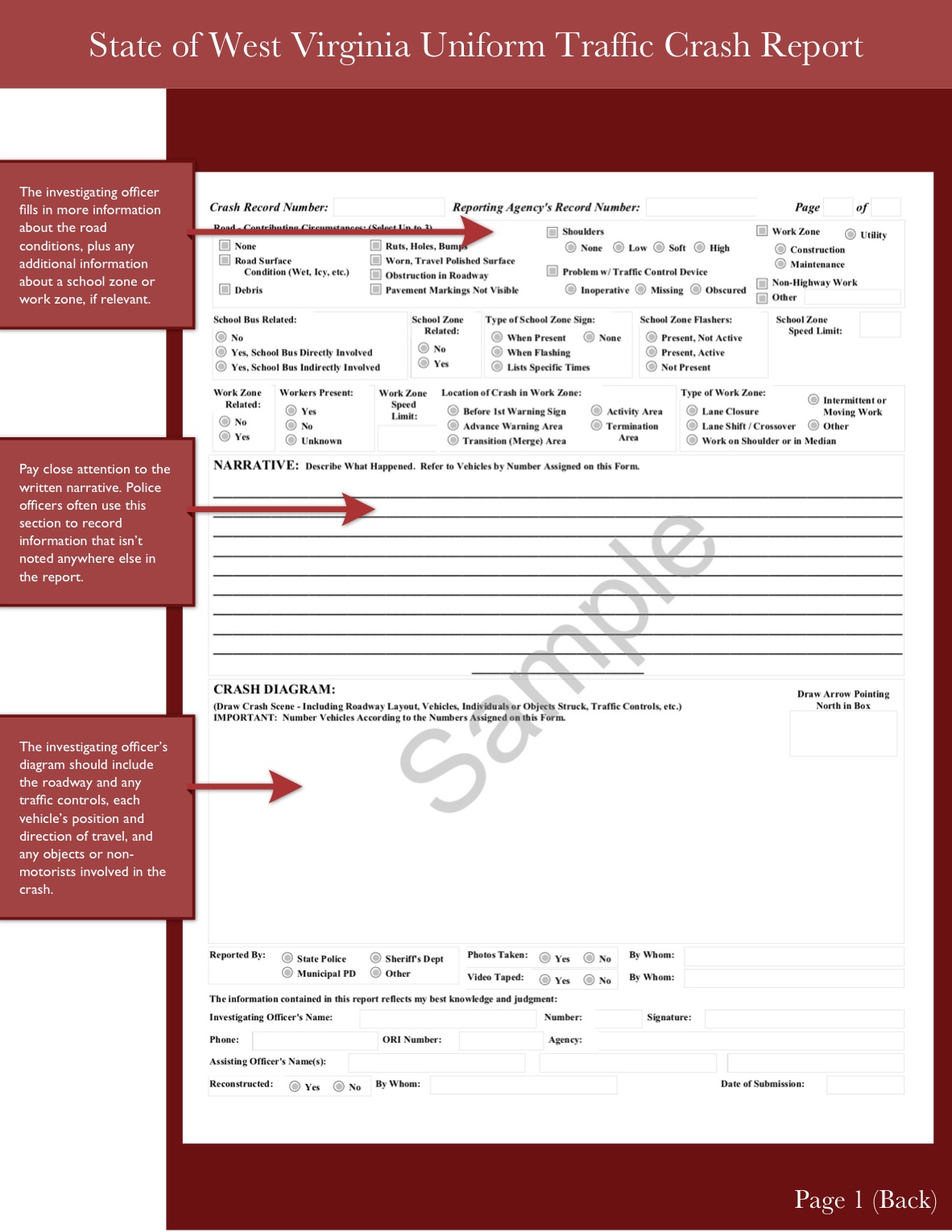
Page 1 (Back)
The investigating officer fills in more information about the road conditions, plus any additional information about a school zone or work zone, if relevant.
Pay close attention to the written narrative. Police officers often use this section to record information that isn’t noted anywhere else in the report.
The investigating officer’s diagram should include the roadway and any traffic controls, each vehicle’s position and direction of travel, and any objects or non-motorists involved in the crash.
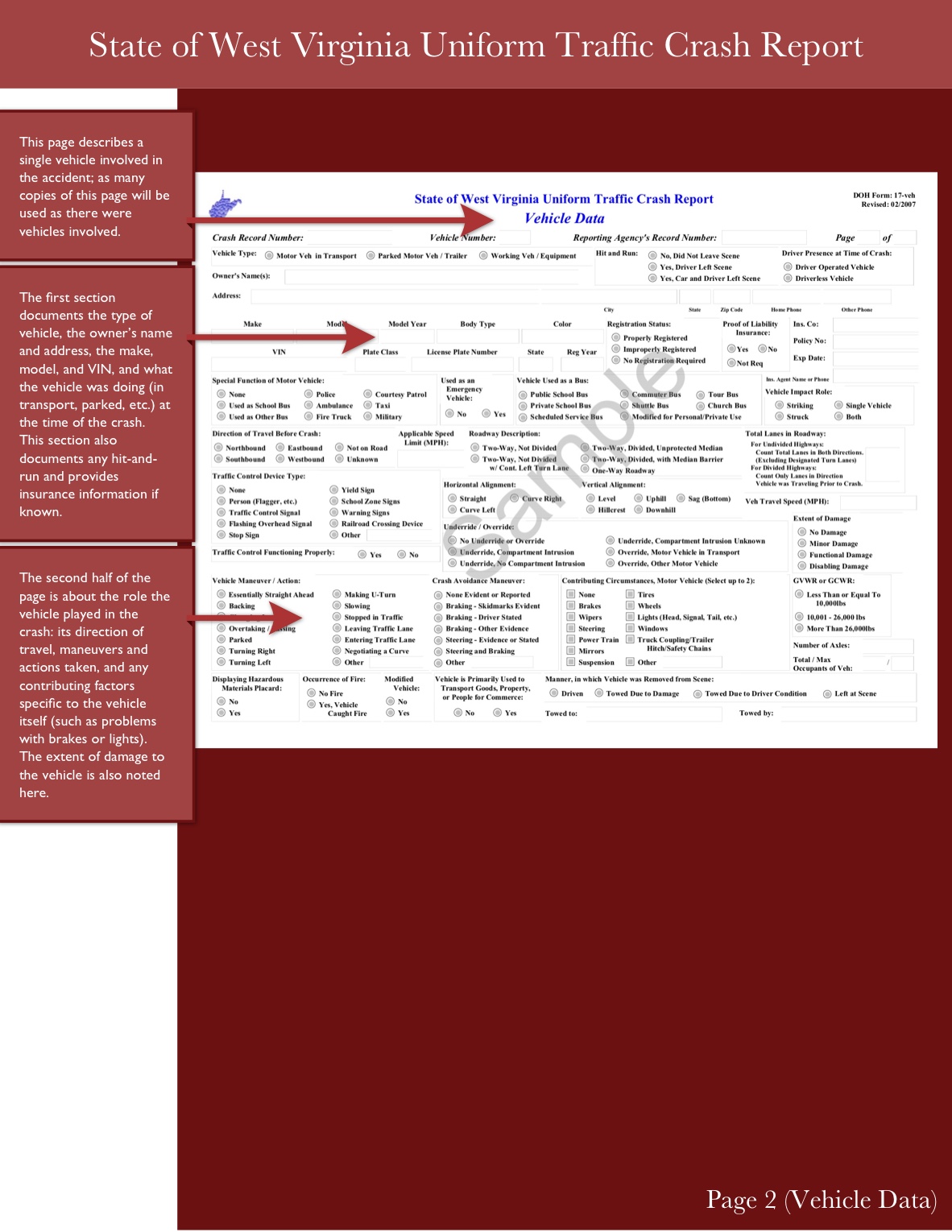
Page 2 (Vehicle Data)
This page describes a single vehicle involved in the accident; as many copies of this page will be used as there were vehicles involved.
The first section documents the type of vehicle, the owner’s name and address, the make, model, and VIN, and what the vehicle was doing (in transport, parked, etc.) at the time of the crash. This section also documents any hit-and-run and provides insurance information if known.
The second half of the page is about the role the vehicle played in the crash: its direction of travel, maneuvers and actions taken, and any contributing factors specific to the vehicle itself (such as problems with brakes or lights). The extent of damage to the vehicle is also noted here.
Page 2 (Back)
This page documents the sequence of events the vehicle was involved in. The officer also notes the most harmful event; that is, the event that caused the greatest property damage or most severe injury.
In the center, the investigating officer chooses a diagram that most closely matches the type of vehicle, then indicates damages areas using the numbers on the diagram. On the right side, any damaged non-vehicle property, such as a guardrail or mailbox, is documented.
If the involved vehicle was pulling one or more trailers, then the trailer(s) are documented on this page.

Page 3 (Driver Data)
This page describes a single operator involved in the accident. One copy of this page is used for each driver.
The first section gives the driver’s name and contact information.
The second section documents the involved driver’s license, including license type, restrictions, endorsements, state of issue and status.
The rest of this page contains information that may affect fault for the accident, including fatigue, distraction, negligent driving, and drug or alcohol use. If the driver was given a drug or alcohol test, the test is documented here as well.
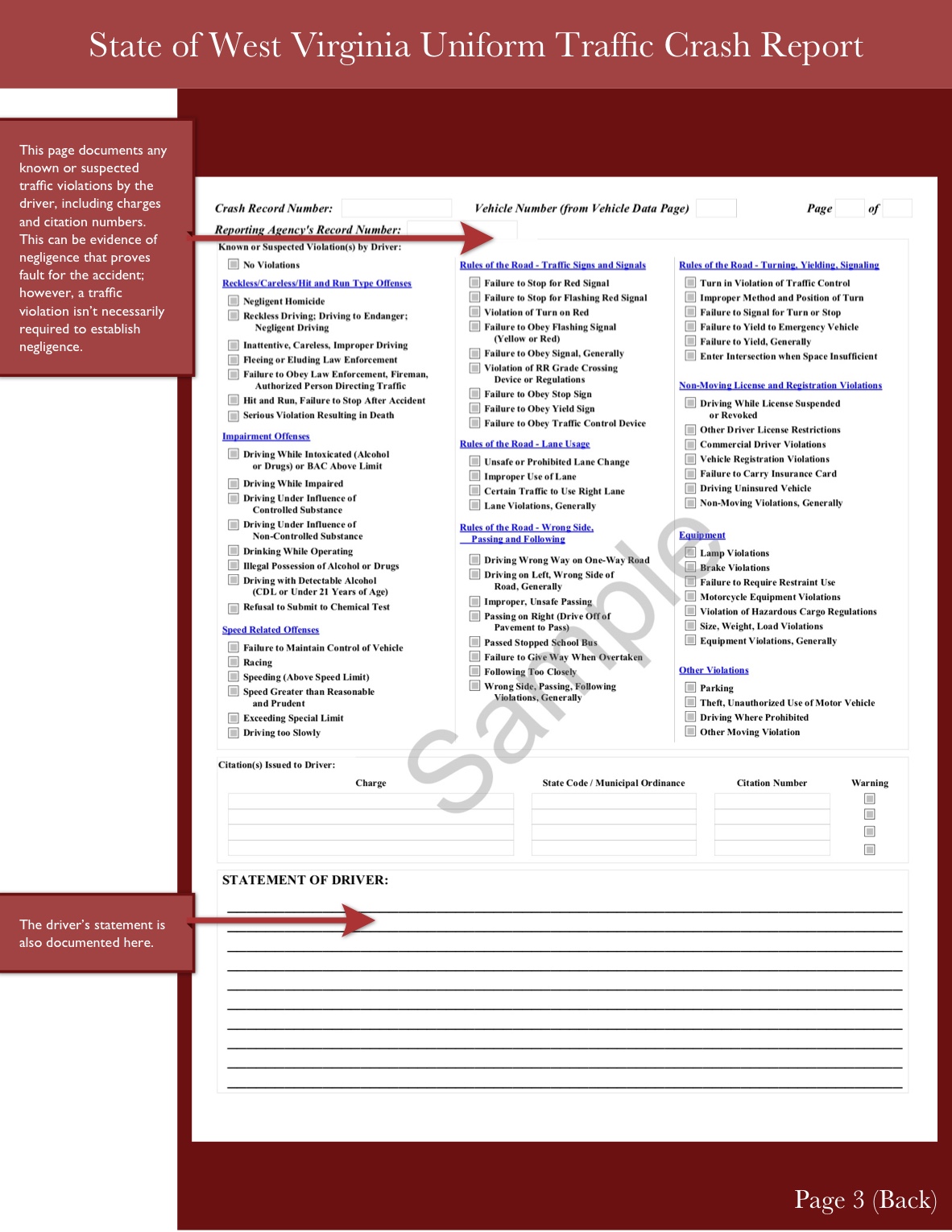
Page 3 (Back)
This page documents any known or suspected traffic violations by the driver, including charges and citation numbers. This can be evidence of negligence that proves fault for the accident; however, a traffic violation isn’t necessarily required to establish negligence.
The driver’s statement is also documented here.
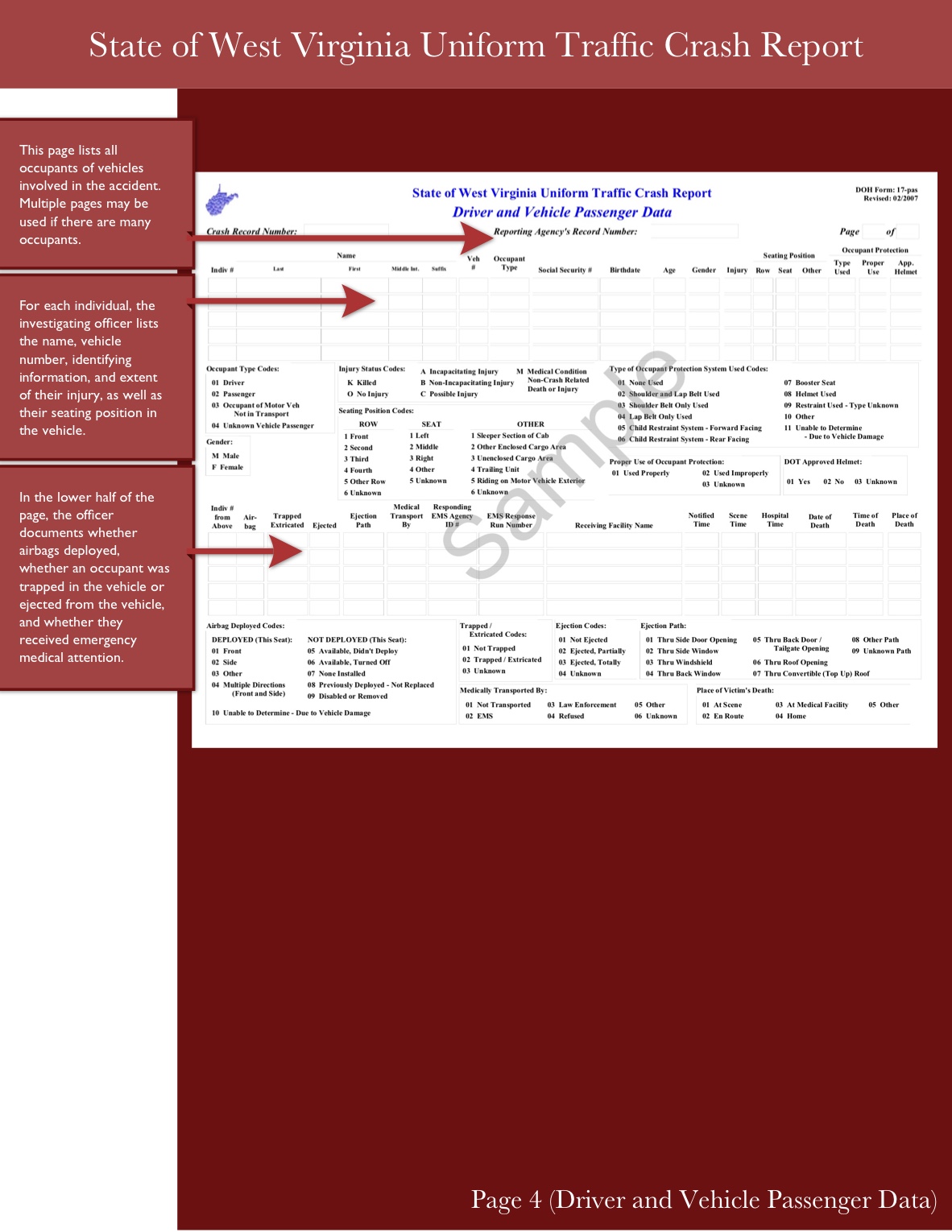
Page 4 (Driver and Vehicle Passenger Data)
This page lists all occupants of vehicles involved in the accident. Multiple pages may be used if there are many occupants.
For each individual, the investigating officer lists the name, vehicle number, identifying information, and extent of their injury, as well as their seating position in the vehicle.
In the lower half of the page, the officer documents whether airbags deployed, whether an occupant was trapped in the vehicle or ejected from the vehicle, and whether they received emergency medical attention.
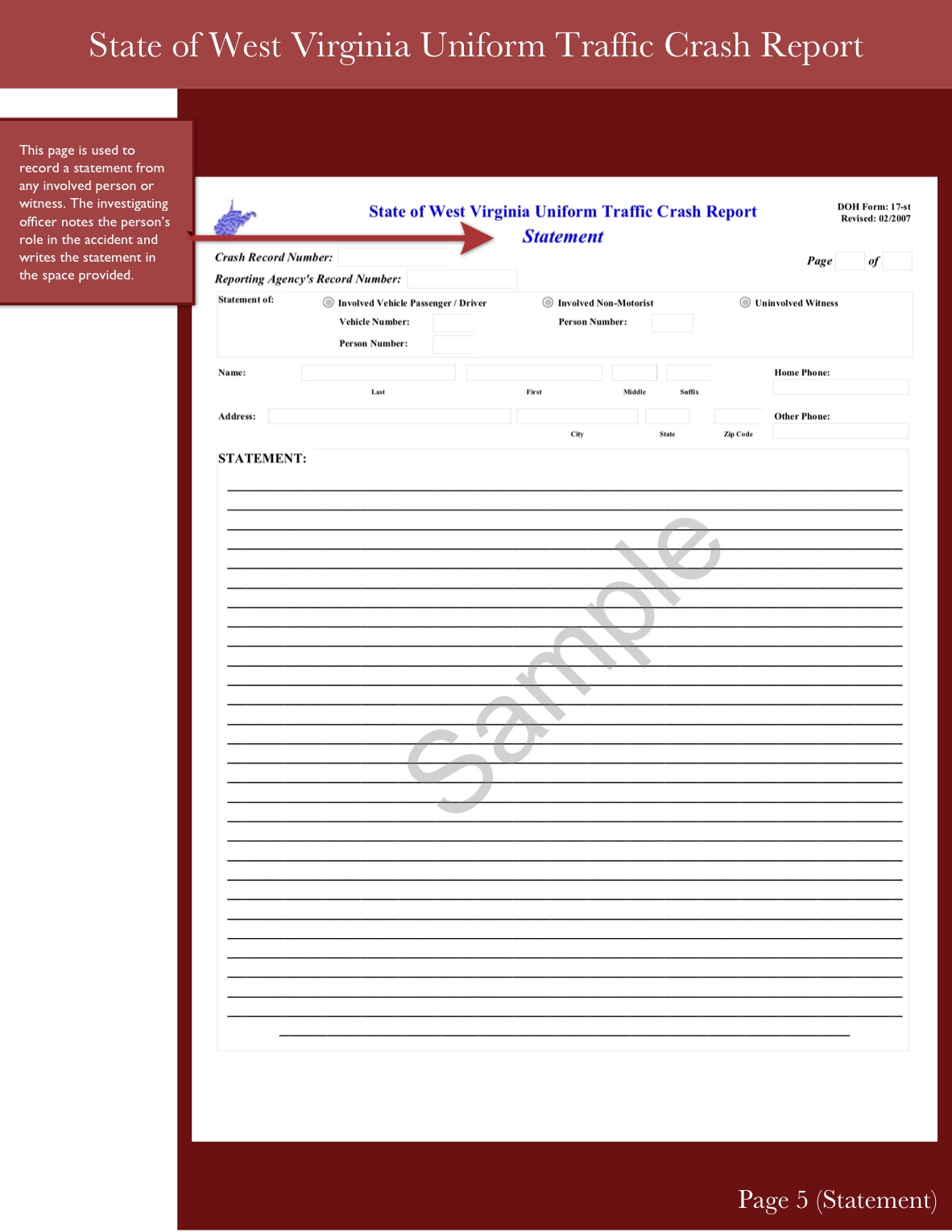
Page 5 (Statement)
This page is used to record a statement from any involved person or witness. The investigating officer notes the person’s role in the accident and writes the statement in the space provided.
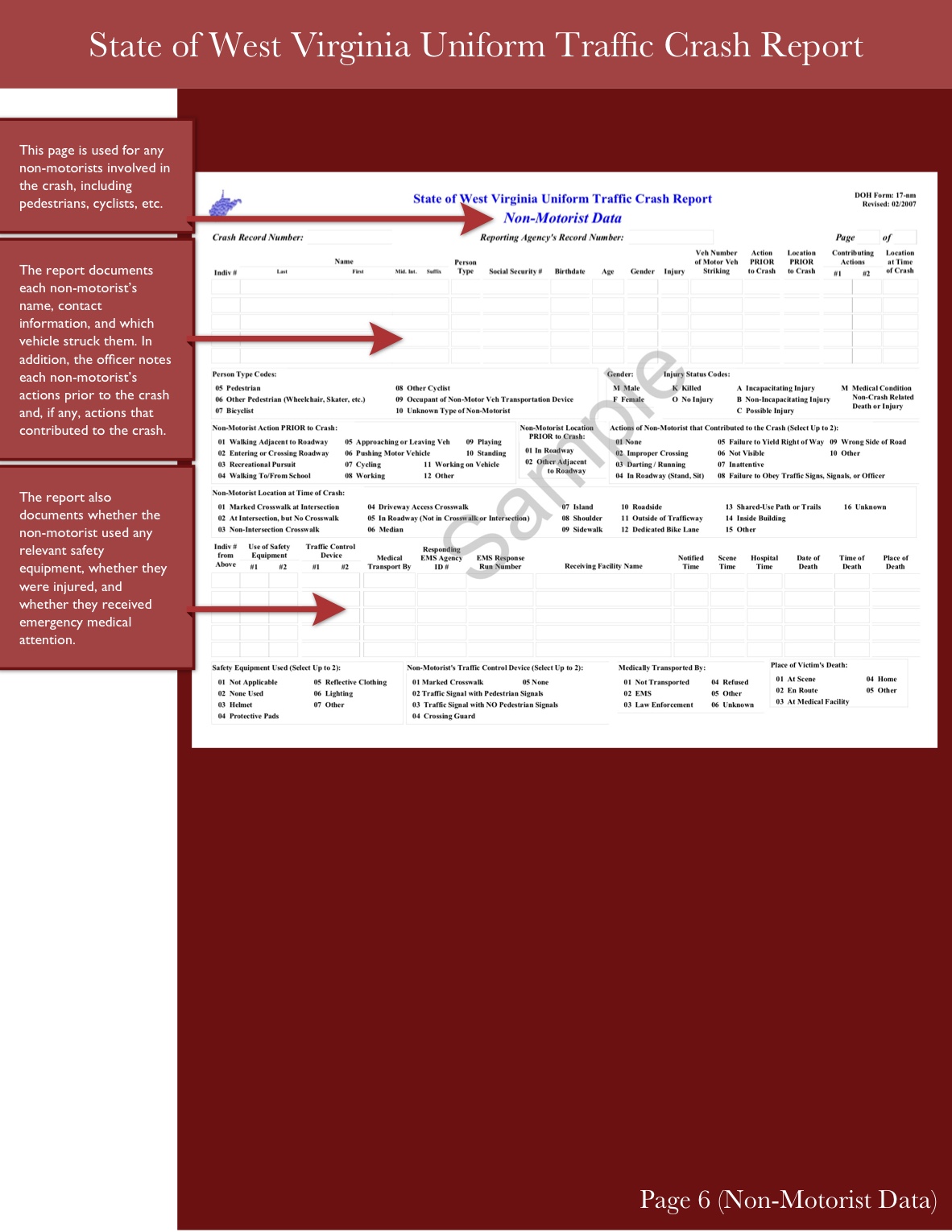
Page 6 (Non-Motorist Data)
This page is used for any non-motorists involved in the crash, including pedestrians, cyclists, etc.
The report documents each non-motorist’s name, contact information, and which vehicle struck them. In addition, the officer notes each non-motorist’s actions prior to the crash and, if any, actions that contributed to the crash.
The report also documents whether the non-motorist used any relevant safety equipment, whether they were injured, and whether they received emergency medical attention.
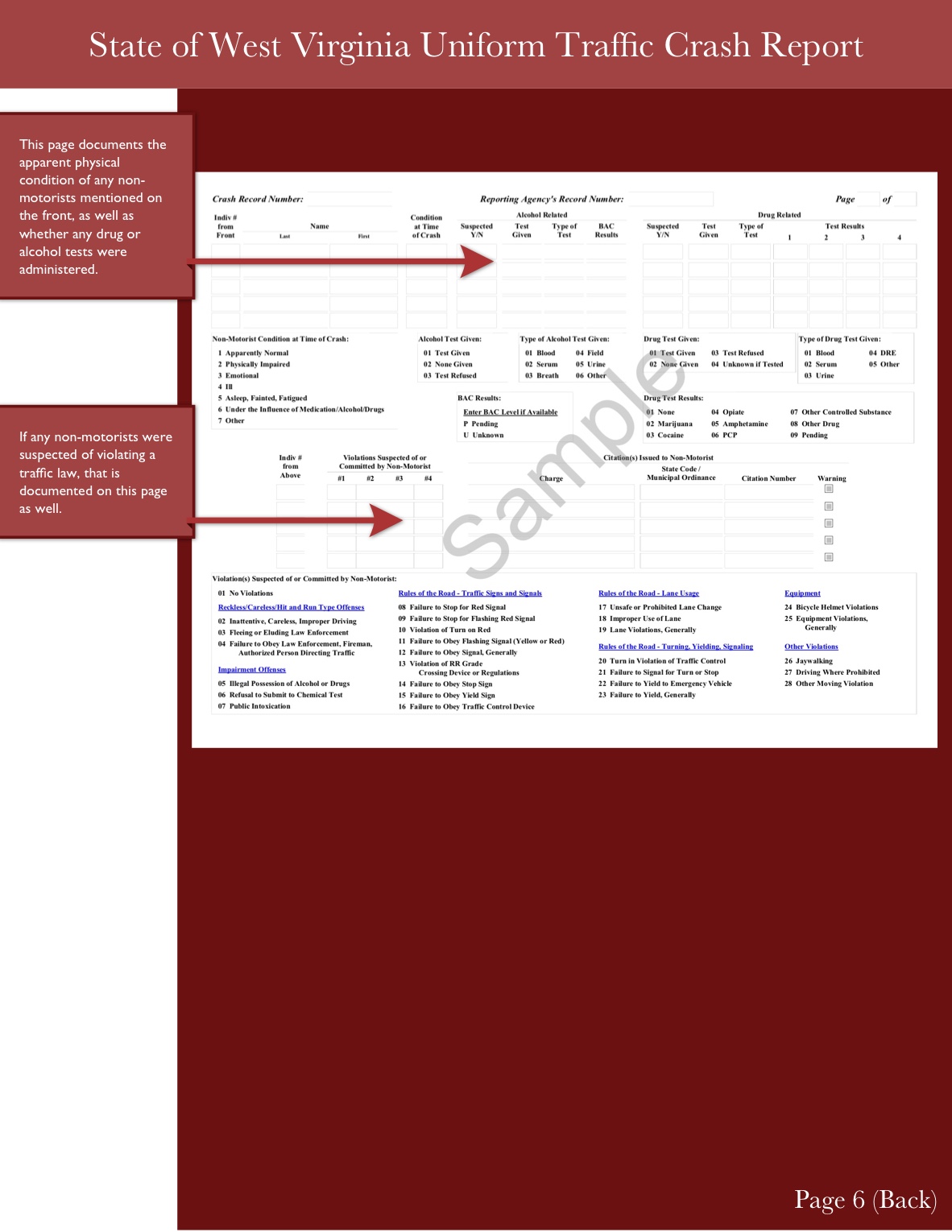
Page 6 (Back)
This page documents the apparent physical condition of any non-motorists mentioned on the front, as well as whether any drug or alcohol tests were administered.
If any non-motorists were suspected of violating a traffic law, that is documented on this page as well.
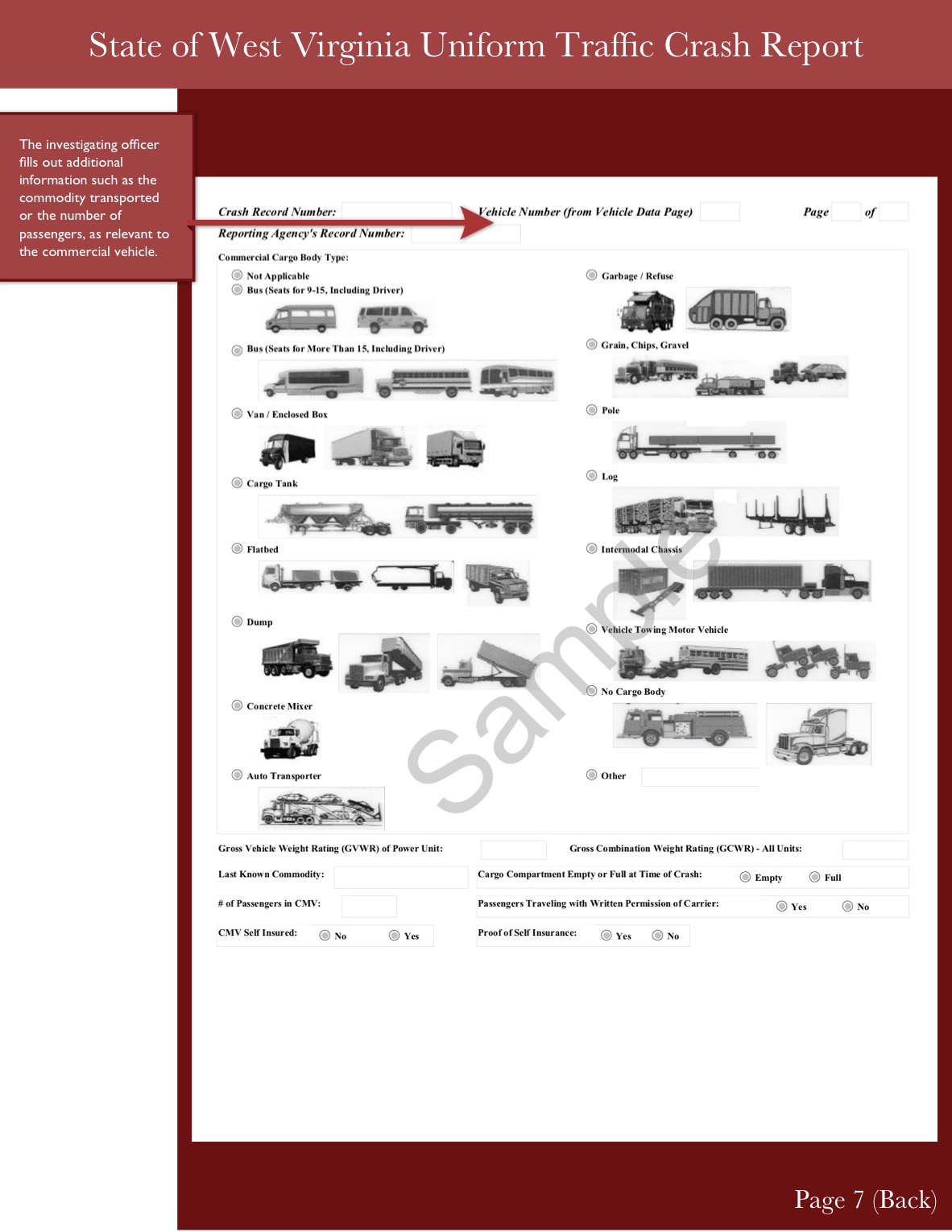
Page 7 (Commercial Vehicle Data)
This supplemental page is used if the accident involved a commercial vehicle, such as a heavy truck, bus, or large van.
The first section documents the commercial carrier and the US Department of Transportation (DOT) number, as well as any other relevant identifying information. If the vehicle was carrying hazardous materials, that is documented here as well.
The investigating officer checks off the appropriate picture for the vehicle’s configuration (continues on the back).
Page 7 (Back)
The investigating officer fills out additional information such as the commodity transported or the number of passengers, as relevant to the commercial vehicle.
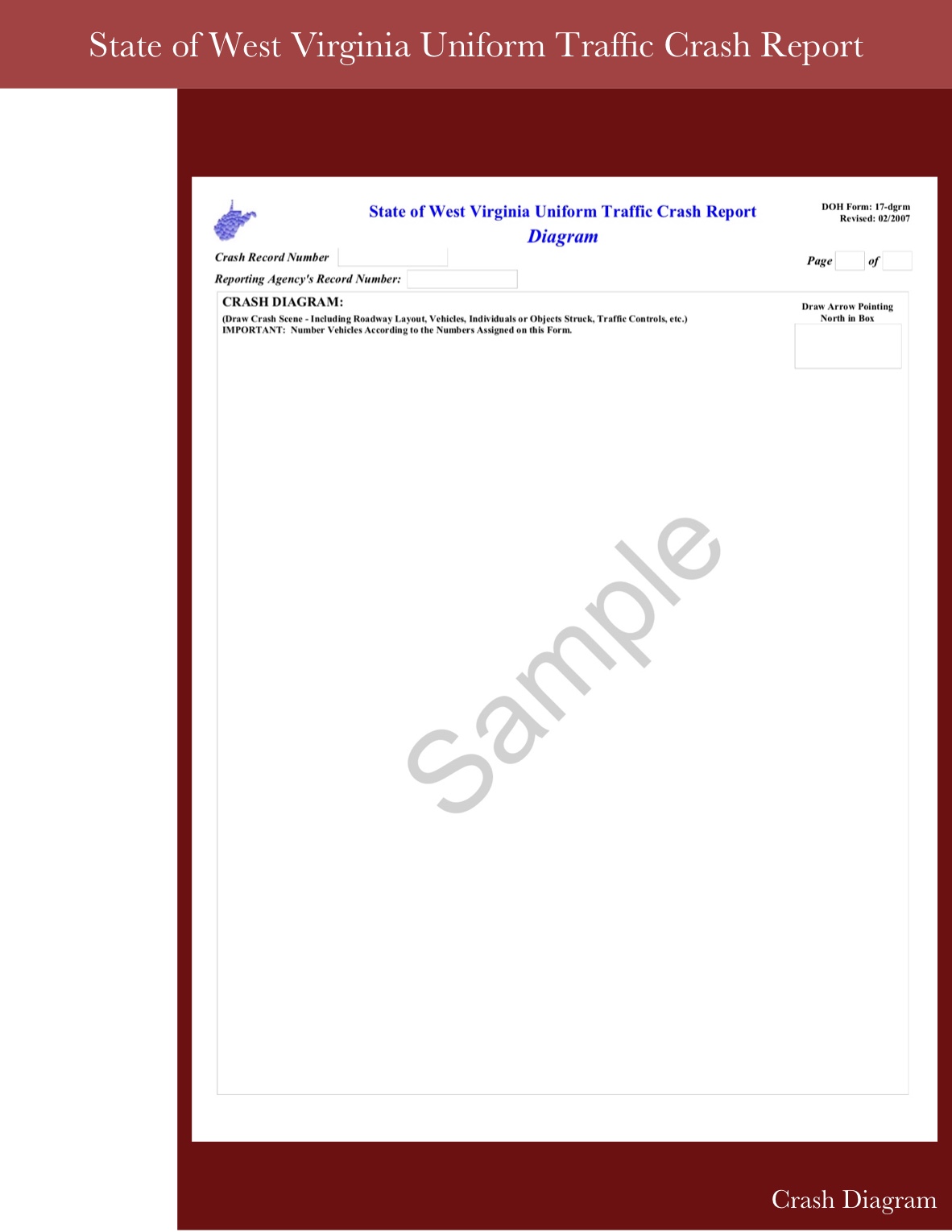
Large diagram
The investigating officer will sometimes choose to draw a larger diagram of the accident. Like the smaller one, make sure the officer’s drawing of your accident is accurate and correct.





